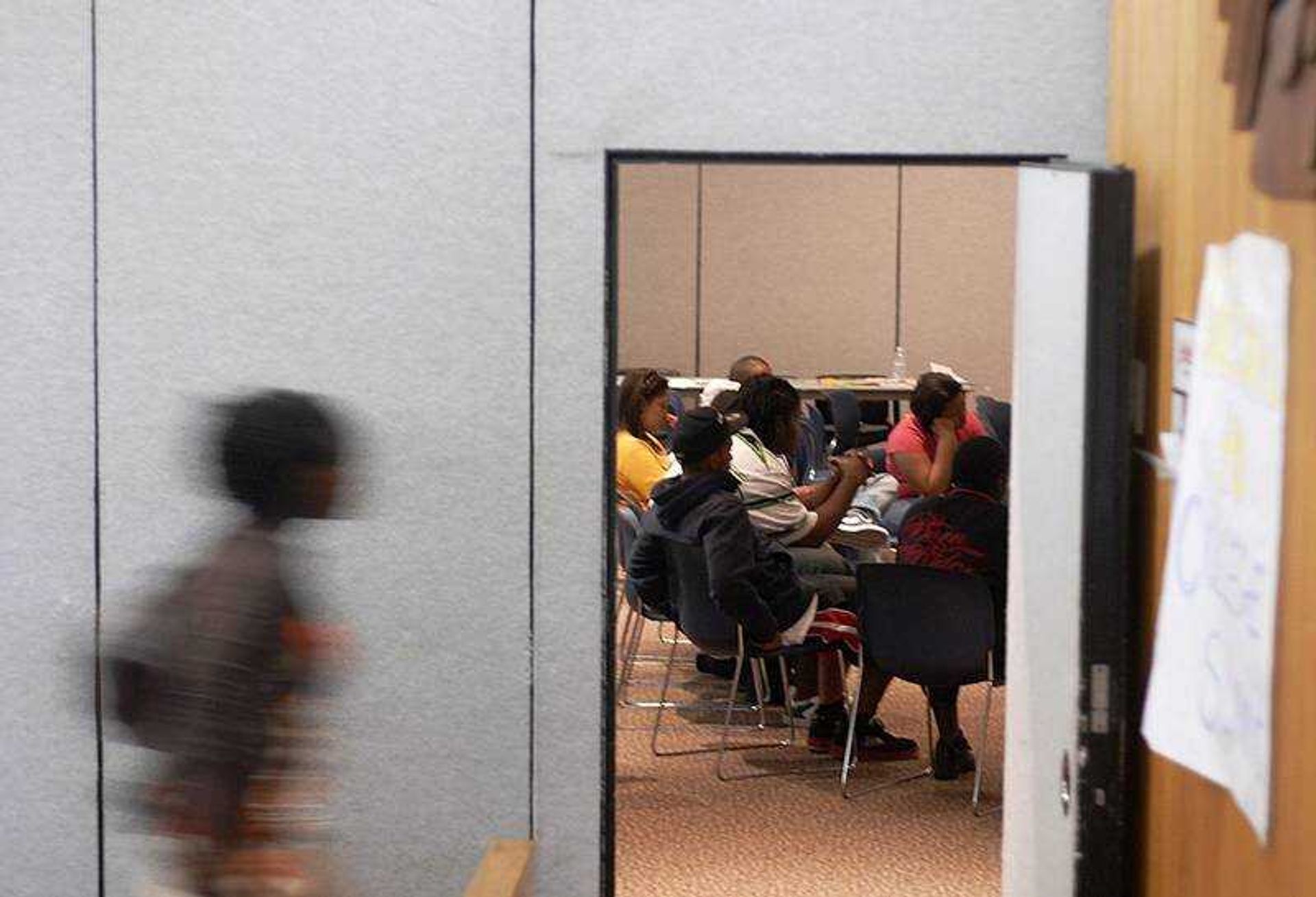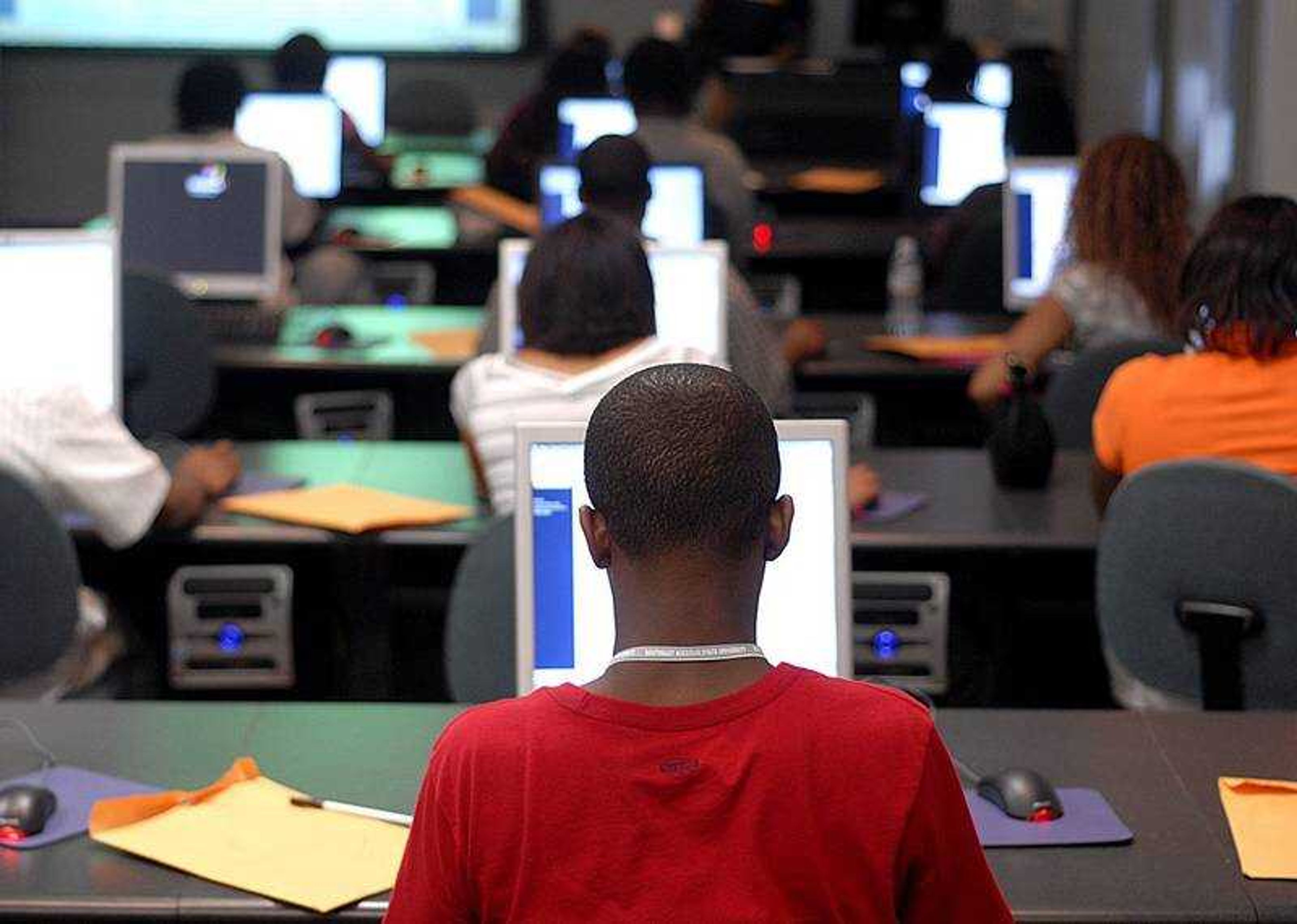Southeast working to attract minority faculty, students
In trying to attract minority faculty members to Southeast Missouri State University, Lincoln Scott immediately faced an image problem. "Why would an African American come to Southeast Missouri if they could work in Atlanta, Austin, Chicago or D.C.?" he asked. "When many African Americans think of Southeast Missouri, the first thing that comes to mind is Cairo, Ill. [site of race riots]. But that's not Cape Girardeau and that's not Southeast Missouri."...
In trying to attract minority faculty members to Southeast Missouri State University, Lincoln Scott immediately faced an image problem.
"Why would an African American come to Southeast Missouri if they could work in Atlanta, Austin, Chicago or D.C.?" he asked. "When many African Americans think of Southeast Missouri, the first thing that comes to mind is Cairo, Ill. [site of race riots]. But that's not Cape Girardeau and that's not Southeast Missouri."
To combat the misunderstanding, Scott decided to hinge the initiative on building relationships. Getting people to give the community a chance was a first step.
At conferences and through existing faculty, Scott identified people who would be good fits. He spent hours on the phone. Eventually the university paid to fly in five people. They were shown the community and introduced to faculty members.
"I don't want to use the expression 'wine and dine,' but I gave them a good time," Scott said.
The participants were encouraged to apply. Four out of five were hired.
After years of stagnant growth -- no black faculty members were hired the previous two years -- the university attracted more members this year than the past five combined, according to Scott.

"Everyone was very warm and welcoming, and they supported my research efforts," said Dr. Shewanee Howard, an assistant professor of health promotion hired in January.
This year's increase is important because black students need role models, school officials said. Black professors have been scarce. In 2007, eight out of 413 faculty members were black, less than 2 percent. In comparison, 11.4 percent of the student body was black.
Scott is quick to point out the none of the filled faculty positions were affirmative action positions. "We had jobs, we needed them filled, and we hired qualified people," he said.
While the university still wants to increase its minority faculty, it has neared its goal of having the minority student population mirror that of the state. The percent of black undergraduate students has grown 80 percent over the past decade, a result of targeted recruiting efforts.
Starting early
The biggest change is that recruitment is starting earlier, according to Dr. Debbie Below, director of admissions.
Through a federal grant called Gear Up, the university works with middle and high school students in the Bootheel to teach them about the college application process, financial aid, and skill building in math and writing. Caruthersville, Mo., and Hayti, Mo., school districts are currently served under the grant.
"We have outreach beginning in the sixth grade," Below said.
A similar program directed at St. Louis students is called College Summit. On Thursday, about 40 students arrived at Southeast for a four-day workshop designed to give low-income, first-generation college students a jump on the college application process.
Hunched over computers, they learned how to navigate the complicated process of evaluating schools, received coaching on writing college entrance essays and started applications to their top three universities. Without help, college often seems unobtainable, said Alan Byrd, Southeast's associate director for recruitment.
During their senior year, the students will continue College Summit classes.
"It gives us an advantage because when we get ready to go to college we'll already know what to expect," said Victoria Jackson, who will be a senior at Roosevelt High School in St. Louis next year.
Partnering with College Summit, a national not-for-profit organization, has paid off for Southeast. Enrollment of College Summit students at Southeast has steadily increased, jumping from two to 10 to 25 in its three-year existence.
Other recruitment efforts by Southeast include speaking at community functions, such as church or college fairs. Preparation for college is a major stress.
"What we noticed when we started recruiting is that minority students didn't have the academic background. They were taking the ACT way too late or were only taking it once. They were not taking challenging classes. We have started earlier telling students they need to go above and beyond the expectations of their high school," Byrd said.
Increasing retention
Standards are not bent for minority students, Below said. Unprepared students are encouraged to attend one of Southeast's regional campuses or a community college.
Nevertheless, the retention of minority students on the main campus is a major concern for school officials. While about 51 percent of all Southeast students graduate in six years, only 28.6 percent of black students do. About 44 percent of black students drop out by their second year.
"Are they having issues as related to race? Or is it academic or financial? We don't know why, but we want to," Scott said.
Initiatives to improve retention have been launched, although a majority of the focus is letting students know what already is available to them.
Any student can receive a coach from an Academic Support Center that meets with students eight times a semester to discuss topics such as syllabi, mid-term grades or registering for classes. Staff also can direct students to other resources such as financial aid.
A peer coaching program matches an upper-class student with an undergraduate for mentoring. A minority peer coaching program exists where all the coaches are minority students.
Each year about 35 to 40 minority students are matched with faculty or staff members for a work study program that stresses building relationships and experiential learning.
"My focus is we want you to use the resources we have. We want students to understand the importance of engaging with the entire campus," said Trent Ball, associate dean of students.
A minority student leadership group is in the beginning stages of formation. The group will serve as an advisory to administrators regarding programming and "decisions that affect students of color," said Vida Mays, the adviser.
"After hearing students saying there's nothing to do," administrators encouraged students to form a group, Mays said. "Students want to see more speakers that look like them or more programming that is of interest to them, like Savion Glover." The black tap dancer will perform Oct. 31 at the River Campus.
The student group will meet for a planning session this week. It is the first of its kind Mays has seen during her seven years at the university.
"The students felt a need to have a voice," she said.
lbavolek@semissourian.com
335-6611, extension 123
Does this affect you?
Have a comment?
Log on to semissourian.com/today
Connect with the Southeast Missourian Newsroom:
For corrections to this story or other insights for the editor, click here. To submit a letter to the editor, click here. To learn about the Southeast Missourian’s AI Policy, click here.









